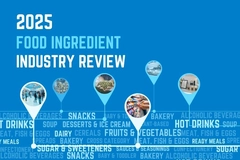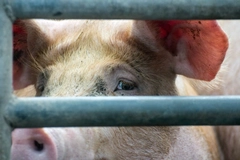
- Industry news
Industry news
- Category news
Category news
- Reports
- Key trends
- Multimedia
- Journal
- Events
- Suppliers
- Home
- Industry news
Industry news
- Category news
Category news
- Reports
- Key trends
- Multimedia
- Events
- Suppliers
E. Coli outbreak in the US linked to Wendy’s chains nears 100 infected

06 Sep 2022 --- Infections linked to the bacteria have spread across the US rust belt states, reaching Michigan, Indiana, Kentucky, Ohio, Pennsylvania and New York state. The outbreak has been linked to Wendy’s fast food chains as 81% of the infected people reported eating at the restaurant in the week before the illness started, according to the Centers for Disease Control and Prevention (CDC).
The outbreak source is unknown so far, “but many sick people reported eating sandwiches with romaine lettuce at Wendy’s restaurants.”
The CDC reports 97 infected, although they admit the real number might be higher.
“The true number of sick people in this outbreak is likely higher than the number reported, and the outbreak may not be limited to the states with known illnesses. In addition, some people recover without medical care and are not tested for E. coli,” says the CDC.

Forty-three people have required hospitalization, and ten developed hemolytic uremic syndrome, a severe condition that can provoke kidney failure.
The CDC is not advising at this point for people to avoid eating at Wendy’s restaurants or to stop eating romaine lettuce.
Monitoring of Romaine lettuce
The CDC does not advise people to stop eating romaine lettuce, “CDC will update this advice if the investigation identifies foods to avoid,” explains the organization.
“At this time, there is no evidence to indicate that romaine lettuce sold in grocery stores, served in other restaurants, or in people’s homes is linked to this outbreak,” according to the disease prevention body.
 The CDC reports 97 infected, although they admit the real number might be higher. (Credits: CDC).“Wendy’s has taken the precautionary measure of removing the romaine lettuce being used in sandwiches from restaurants in this region.”
The CDC reports 97 infected, although they admit the real number might be higher. (Credits: CDC).“Wendy’s has taken the precautionary measure of removing the romaine lettuce being used in sandwiches from restaurants in this region.”
The food chain says it has removed sandwich lettuce from several hundred locations in the Midwest. Pacific International Marketing, a large supplier of Wendy’s lettuce in California, affirms that it is aware of the sickness and monitoring its spread.
With food safety awareness always at the top of mind for manufacturers, the latest rollouts of hygiene-promoting technologies continue to attract attention.
FoodIngredientsFirst recently caught up with experts from Kerry, Blue California, Givaudan and Kalsec to showcase the latest insights and developments in natural preservation solutions, which include novel botanical ingredient synergies.
On the packaging front, Aptar Food + Beverage introduced InvisiShield technology, an anti-pathogenic packaging solution for sealed containers, to the fresh produce sector. The technology releases a chlorine dioxide antimicrobial solution onto the product to protect it from hepatitis A, as well as E. coli and Salmonella.
Leafy greens and E. coli symptoms
Last year two E. coli outbreaks were linked to leafy greens, with the CDC recommending washing hands, utensils and surfaces before and after preparing them. “The safest produce is cooked; the next safest is washed,” flags the organization.
Around 179 million cases of foodborne illnesses are transmitted each year in the US, leading to an estimated 6,186 deaths and 486,777 hospitalizations, according to the CDC. The leading viruses are Norovirus and Salmonella.
By Marc Cervera










